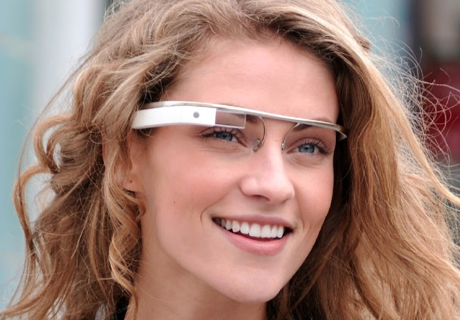Google Glass Gets One Step Closer to Being On Your Head
March 4, 2013
It’s a real possibility that Google Glass, the wearable computing device designed to reduce distraction and allow for communicating in a new way, could be in consumers’ hands by the end of the year. It’s the anti-smartphone, writes The Verge, designed to rewire the way we think about and interact with each other and technology. But the question remains: Who would want to wear the device in public?
According to the article, “Glass is getting real much sooner than anyone expected” as Google has started to allow consumers to test it out. Joshua Topolsky, writing for The Verge, was one such lucky beta tester. “Think of it as a really aggressive beta — something Google is known for,” he writes.
He also sat down with Glass product director Steve Lee and lead industrial designer Isabelle Olsson, first discussing why the product is in development at all.
 “We all know that people love to be connected… technology allows us to connect in that way,” explained Lee. “A big problem right now are the distractions that technology causes. If you’re a parent — let’s say your child’s performance, watching them do a soccer game or a musical. Often friends will be holding a camera to capture that moment. Guess what? It’s gone. You just missed that amazing game.”
“We all know that people love to be connected… technology allows us to connect in that way,” explained Lee. “A big problem right now are the distractions that technology causes. If you’re a parent — let’s say your child’s performance, watching them do a soccer game or a musical. Often friends will be holding a camera to capture that moment. Guess what? It’s gone. You just missed that amazing game.”
And Isabelle added: “Did you see that Louis C.K. stand up when he was telling parents, ‘your kids are better resolution in real life?’ Everyone laughs, but the point is made.” To that point, the article notes: “Human beings have developed a new problem since the advent of the iPhone and the following mobile revolution: no one is paying attention to anything they’re actually doing.”
And so the idea behind Google Glass is to bring technology closer to your senses. It “would that allow you to more quickly get information and connect with other people but do so in a way — with a design — that gets out of your way when you’re not interacting with technology,” writes The Verge.
Topolsky tested the device, which “gets data through Wi-Fi on its own, or it can tether via Bluetooth to an Android device or iPhone and use its 3G or 4G data while out and about. There’s no cellular radio in Glass, but it does have a GPS chip,” he writes. “Let me start by saying that using it is actually nearly identical to what the company showed off in its newest demo video. That’s not CGI — it’s what Glass is actually like to use. It’s clean, elegant, and makes relative sense.”
“The screen is not disruptive, you do not feel burdened by it,” he adds. “It is there and then it is gone. It’s not shocking. It’s not jarring. It’s just this new thing in your field of vision. And it’s actually pretty cool.”
Issues did arise with the connection. “A good data connection is obviously key for the device to function properly, and when taking Glass outside for stroll, losing data or experiencing slow data on a phone put the headset into a near-unusable state,” he writes. Lee and Olsson know it isn’t perfect yet. “In fact, they tell me that the team plans to issue monthly updates to the device when the Explorer program starts rolling. This is very much a work in progress.”

No Comments Yet
You can be the first to comment!
Sorry, comments for this entry are closed at this time.